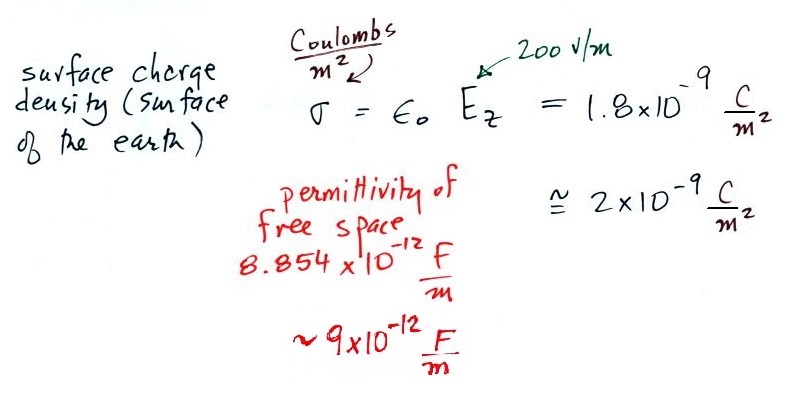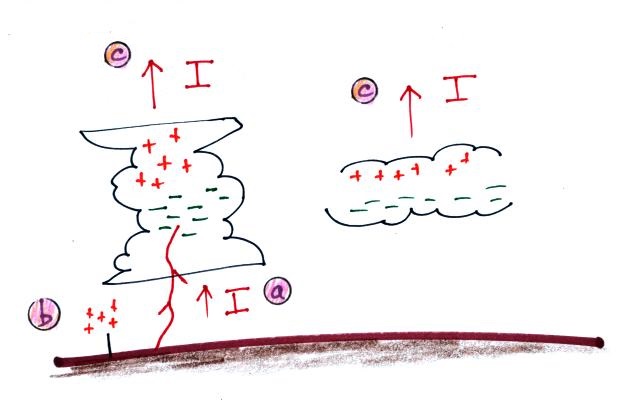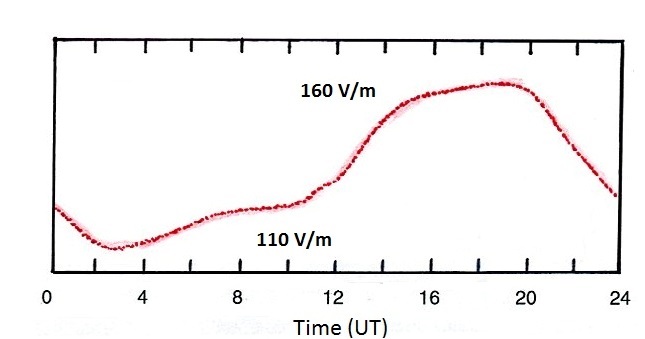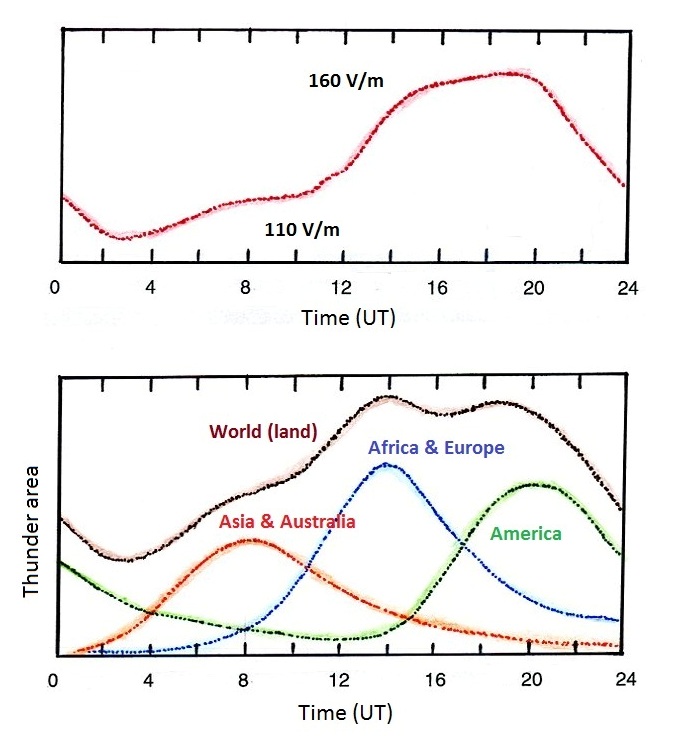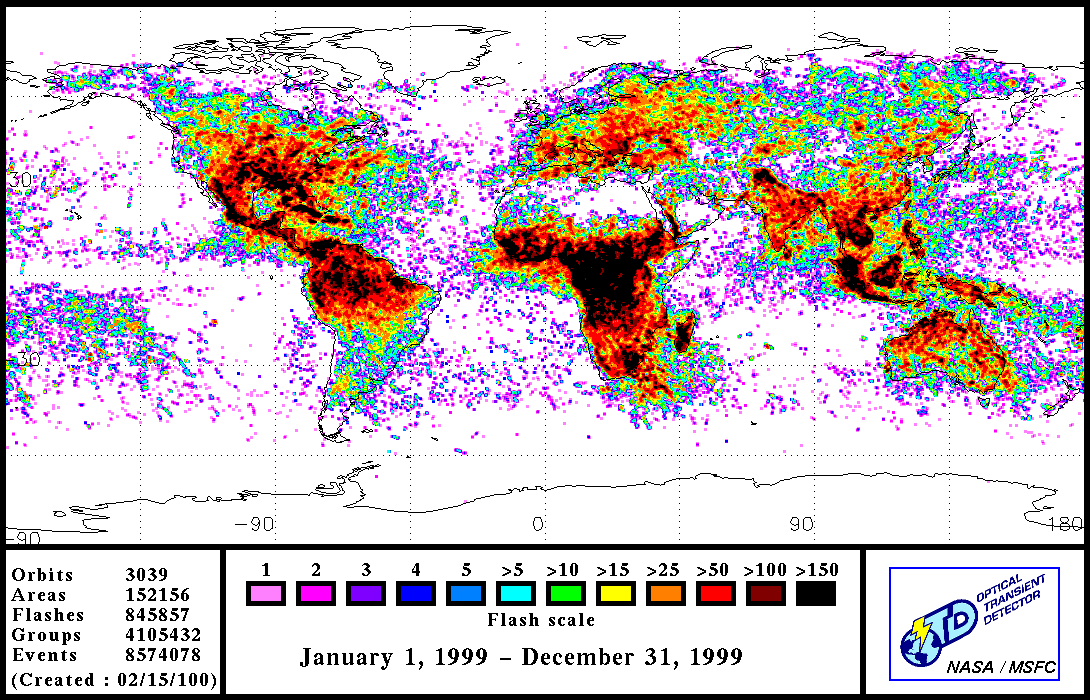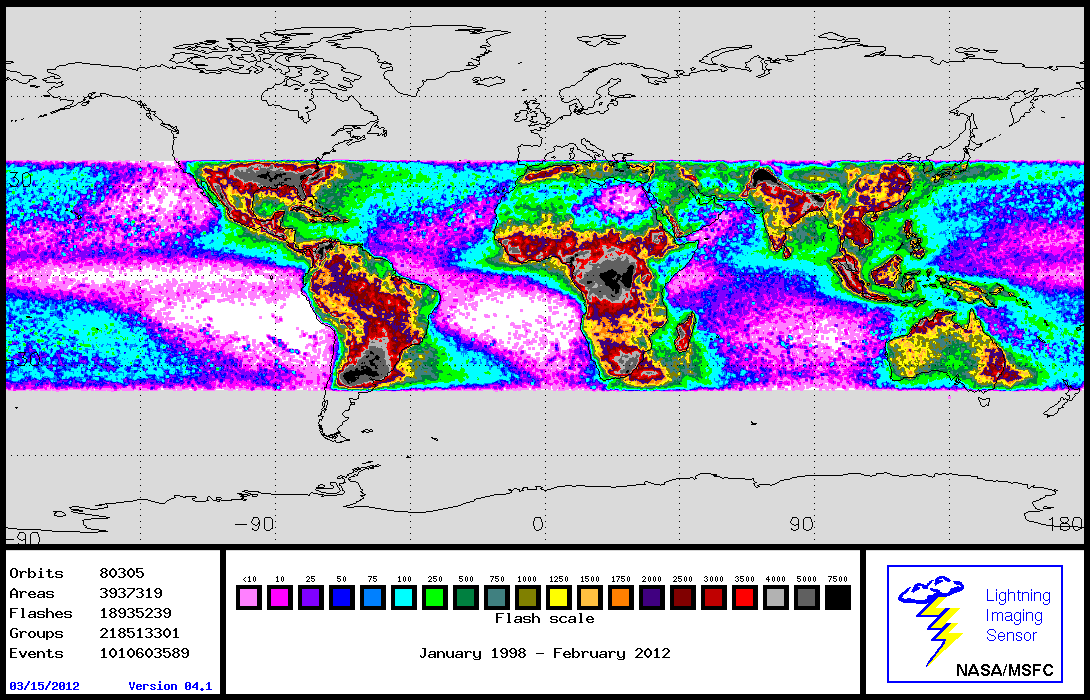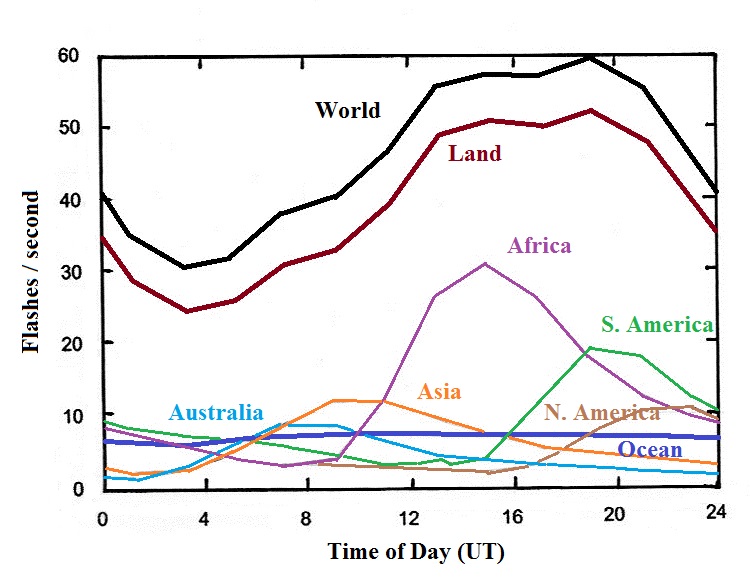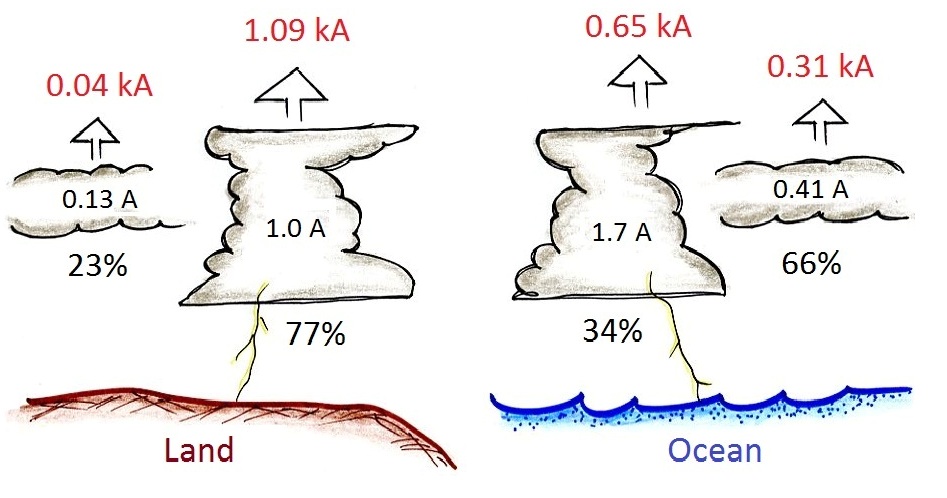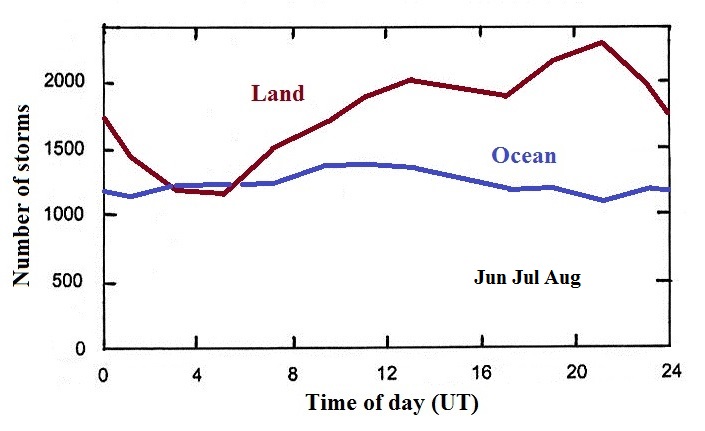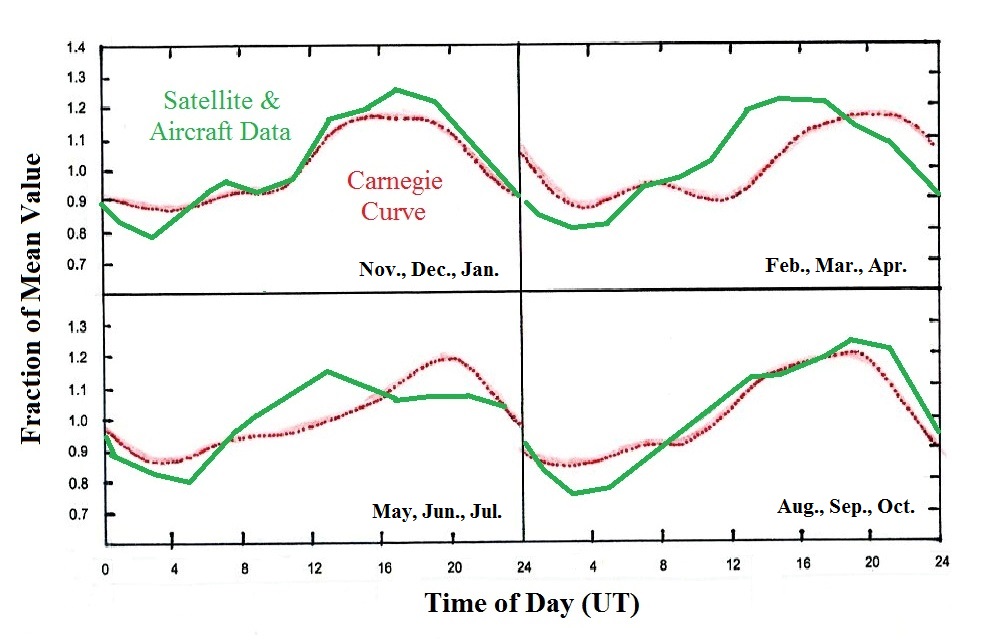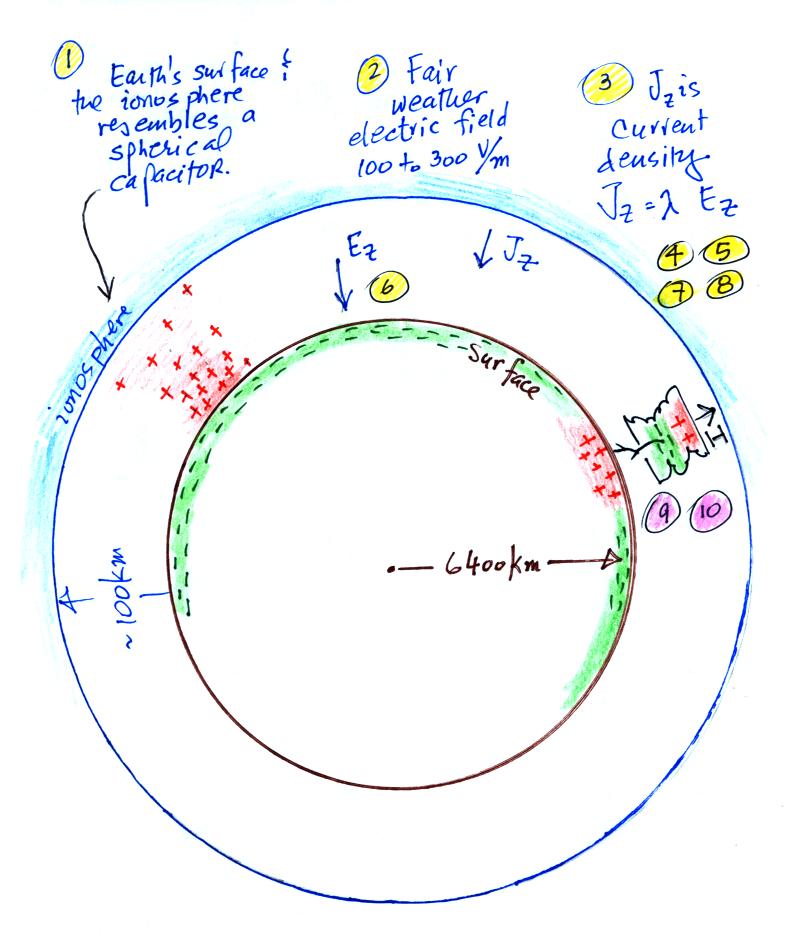Global electric circuit continued
Point 8 There is a simple relation between the surface charge density (Coulombs per unit area) and electric field at the surface of the earth which we assume to be a conductor (we'll derive this expression soon in this class, it's a simple application of Gauss' Law). F below stands for Farads, units of capacitance.
